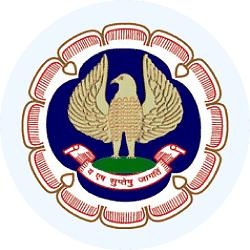CA Foundation Exam > CA Foundation Notes > Business Economics for CA Foundation > Cheatsheet: Business Cycles
Cheatsheet: Business Cycles | Business Economics for CA Foundation PDF Download
| Table of contents |

|
| Introduction |

|
| Phases of Business Cycle |

|
| Features of Business Cycles |

|
| Causes of Business Cycles |

|
| Economic Indicators |

|
| Examples of Business Cycles |

|
| Relevance in Business Decision Making |

|
Introduction

Phases of Business Cycle

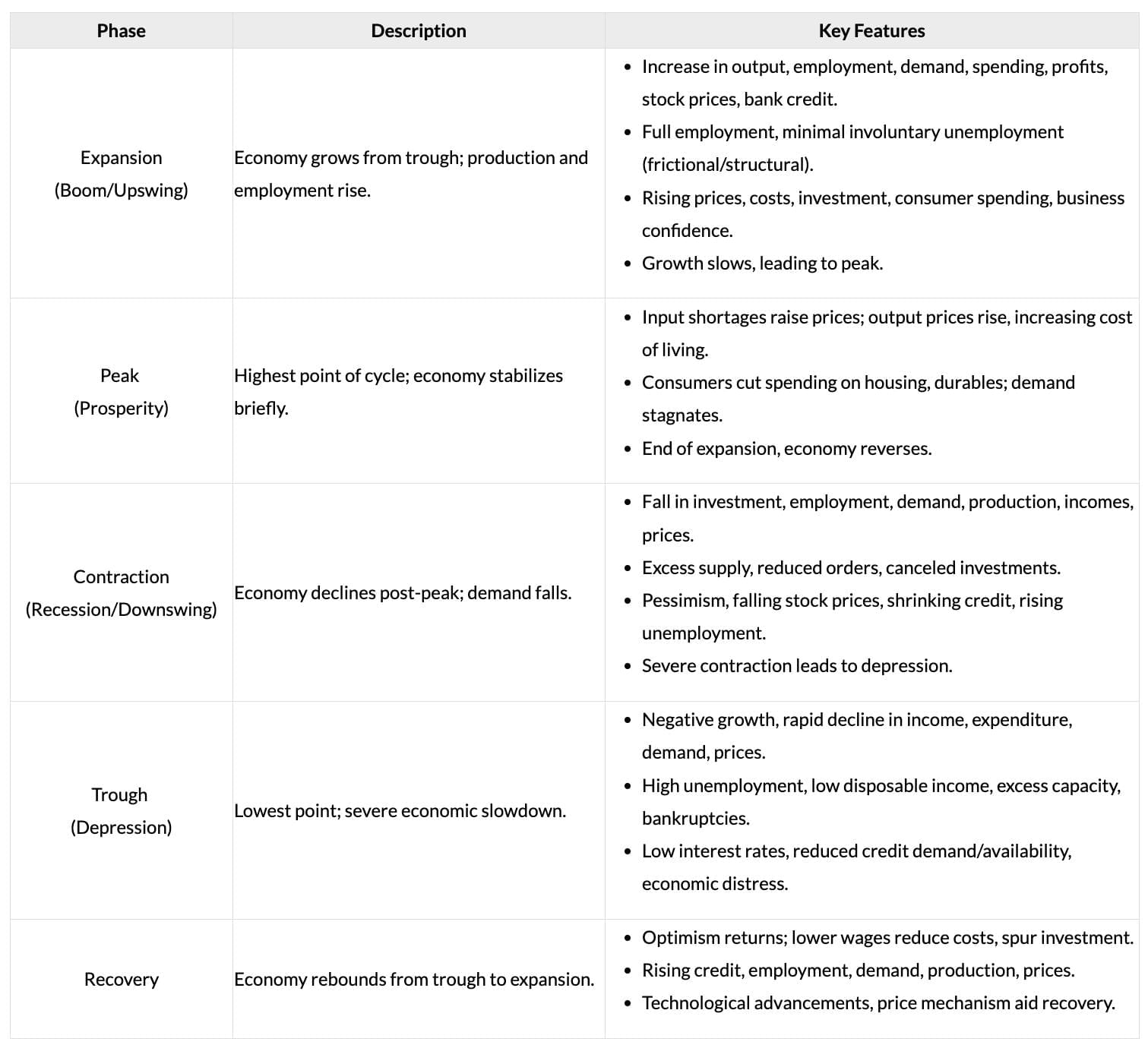
Features of Business Cycles

Causes of Business Cycles
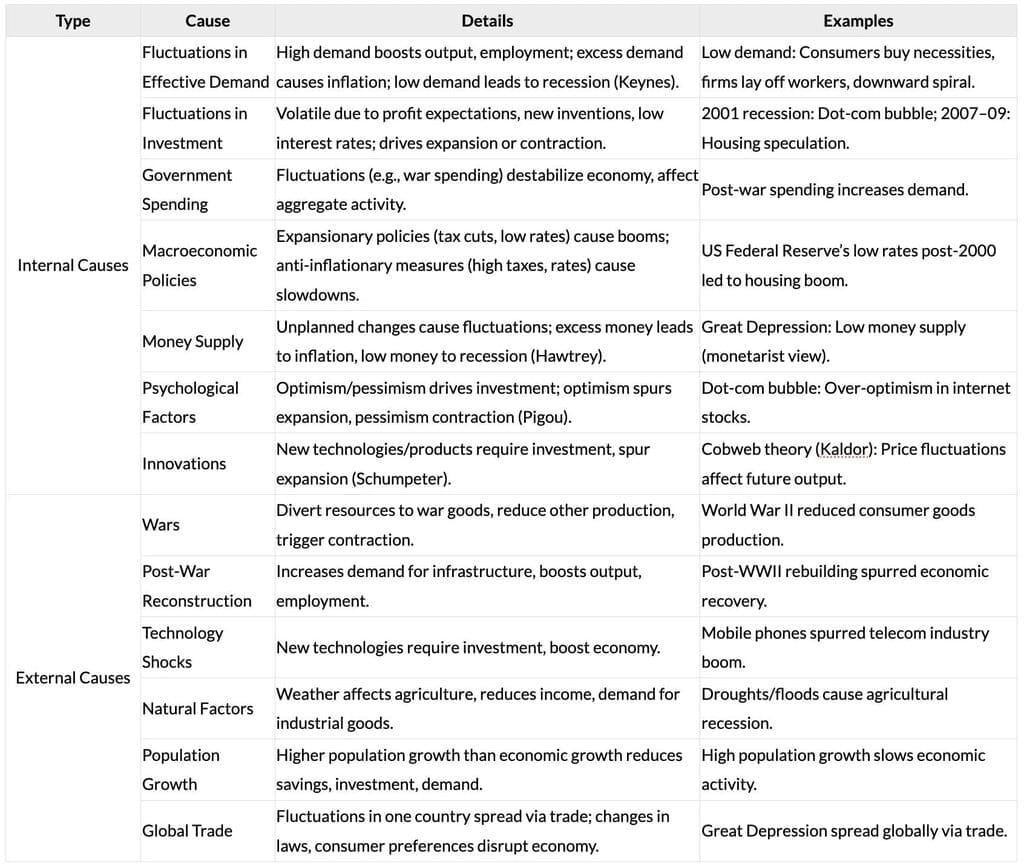
Economic Indicators
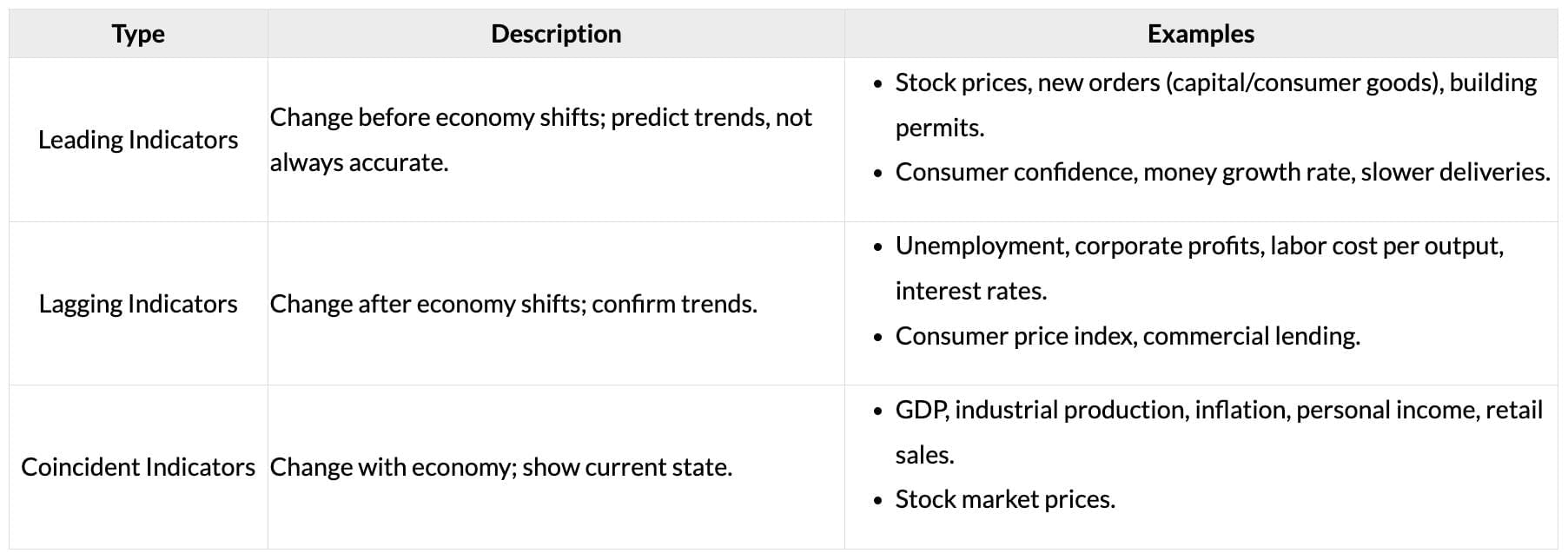
Examples of Business Cycles
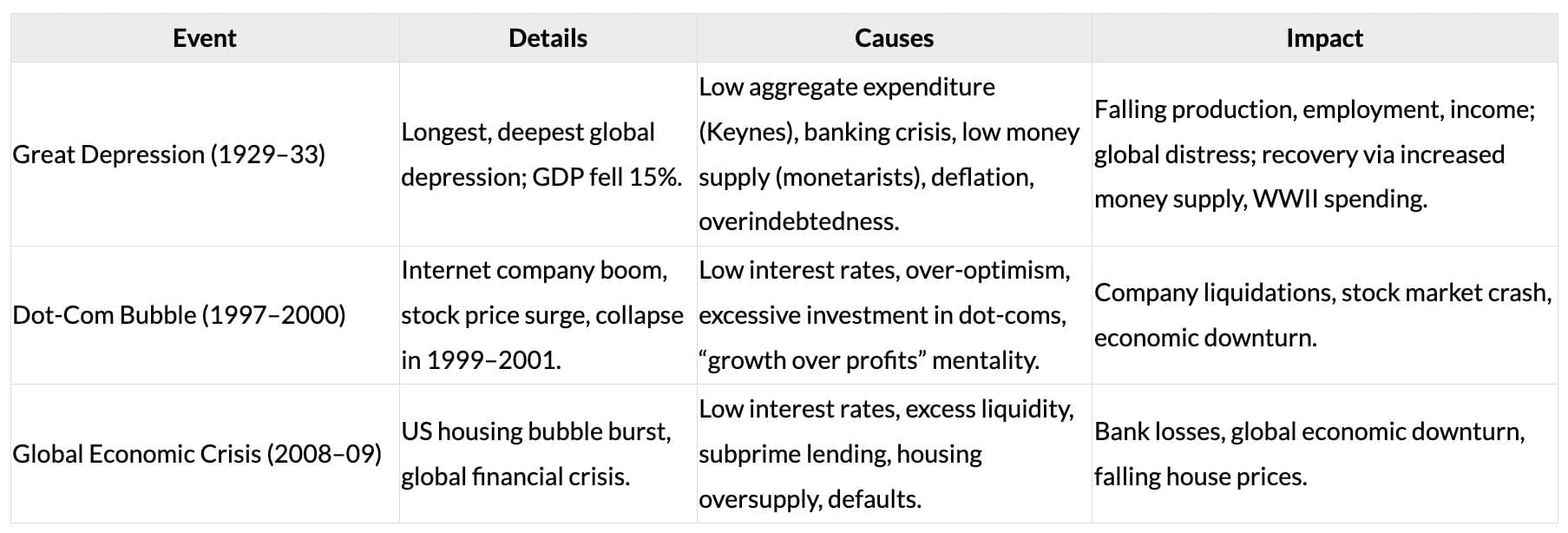
Relevance in Business Decision Making

The document Cheatsheet: Business Cycles | Business Economics for CA Foundation is a part of the CA Foundation Course Business Economics for CA Foundation.
All you need of CA Foundation at this link: CA Foundation
|
86 videos|255 docs|58 tests
|
FAQs on Cheatsheet: Business Cycles - Business Economics for CA Foundation
| 1. What are the main phases of the business cycle? |  |
Ans. The business cycle typically consists of four main phases: expansion, peak, contraction, and trough. During the expansion phase, economic activity increases, leading to higher employment and production. The peak represents the highest point of economic performance before a downturn. Contraction follows, where economic activity declines, resulting in decreased consumer spending and increased unemployment. Finally, the trough is the lowest point, where the economy stabilizes before beginning a new expansion.
| 2. What features characterize business cycles? |  |
Ans. Business cycles are characterized by several key features, including their fluctuations in economic activity, the alternating periods of expansion and contraction, and their irregular timing. Additionally, they tend to impact various economic indicators such as GDP, employment rates, and consumer spending. Business cycles can also vary in duration and intensity, making them complex phenomena to analyze.
| 3. What are some common causes of business cycles? |  |
Ans. Business cycles can be attributed to various causes, including changes in consumer and business confidence, fluctuations in interest rates, variations in fiscal and monetary policies, and external shocks such as natural disasters or geopolitical events. Additionally, technological advancements and changes in supply and demand can also play a significant role in influencing the cycle.
| 4. How do economic indicators relate to business cycles? |  |
Ans. Economic indicators are crucial for understanding business cycles as they provide quantitative data that reflects the current state of the economy. Key indicators include Gross Domestic Product (GDP), unemployment rates, inflation rates, and consumer spending. These indicators help analysts predict the phases of the business cycle and make informed decisions regarding investments, policy-making, and business strategies.
| 5. Why is understanding business cycles important for business decision-making? |  |
Ans. Understanding business cycles is essential for effective business decision-making as it allows companies to anticipate changes in the economic environment. By recognizing which phase of the cycle the economy is in, businesses can adjust their strategies regarding production, hiring, and investment. This knowledge helps minimize risks and capitalize on opportunities, ultimately leading to better financial performance and sustainability.
Related Searches



